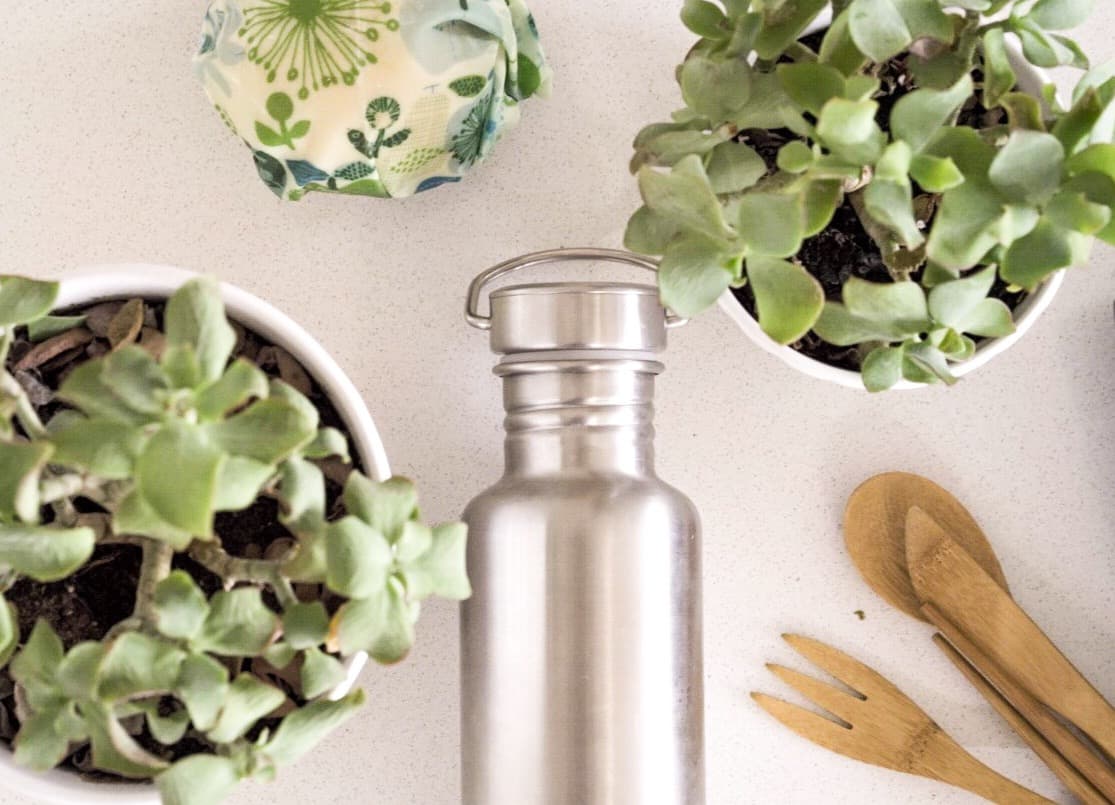
Zero Waste Plan: A Beginner’s Guide To Zero Waste
We’ve been tinkering with our own zero waste lifestyle for a few years now.
We started in London when the movement was exploding with brick and mortar bulk stores.
Our area was well set up with a little farmer’s market and the council collected our compost and recycling which made it pretty easy to get the basics right (although we still failed a fair bit).
Then we went on a 6 month trip around the world to find and share epic stories of inspiration and while we managed to practice some of our own zero-waste tips, it was very difficult to get it right all the time, especially in countries that are not well set up to deal with waste.
We are now back from our travels and are putting some serious thought into how we design our lives from here.
One key aspect of this will be designing our own waste management system and re-setting our zero waste ambitions.
We’re almost starting back at square-one considering we need to look at what we already have and what we will need here in Australia and how well set up the local community is for zero-wasting.
We thought our modest zero waste plan might be worth sharing, considering so many people are excited about reducing their waste but may be a little overwhelmed / intimidated by the waste jars of the zero waste elite!
WHY Create a Zero Waste Plan?
If you’re here, you’re probably already well aware of the global waste problem and want to do your bit. If you need a little extra push or info these articles will help:
- what is zero waste
- why zero waste is a great idea
- zero waste documentaries will get you moving a little faster
- and this series will remind you how beautiful our earth is and why it’s important to care for it.
Do what you can and as they say, don’t let perfect get in the way of better!
Important to say that “zero waste” is the ultimate ambition but you are unlikely to get there completely, none of us are (unless you’re living totally off-grid and growing all your own food).
Don’t be disappointed if you mess up or if perhaps your environment and support system is not as conducive to a complete zero waste overhaul.
If you’re ready to roll with us, here is a summary of what this zero waste plan covers with a rough timeline that we think is reasonable and realistic for most people who are typically busy and already trying to balance so much!
You shouldn’t feel like you have to stick exactly to this plan, you may want to go faster or slower and you should customize it as useful / practical.
*This post contains affilate links

QUICK LINKS FOR A ZERO WASTE Plan
STEP 1: GET INSPIRED AND LEARN ABOUT ZERO WASTE PRINCIPLES
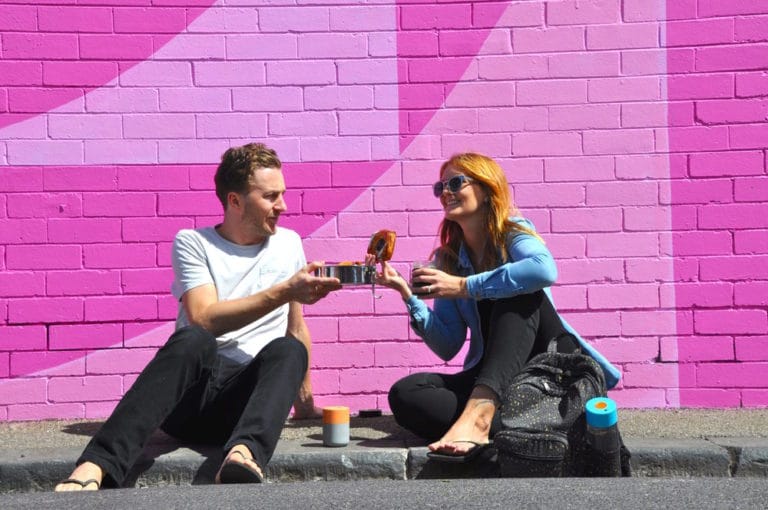

Why not start with a fun one?
We get super inspired by other bloggers and zero-wasters who are creatively solving all kinds of waste problems and doing so much to inspire change in others.
We’ve made a list of zero-waste blogs that we think are top notch, provide great advice and are super fun to follow on the socials for daily inspiration.
Read: Zero Waste Blogs That Will Change Your Life & Sustainability Blogs for Eco Ideas & Inspiration.
Many of these blogs will do a great job of teaching you about the principles.
The most famous and useful framework was created by Bea Johnson in her book (Zero Waste Home): THE FIVE RS!
Having this framework or set of rules in the back of your mind when looking at your consumption (See Step 2 below) is really the essence of Zero Waste Living:
- Refuse what you do not need (e.g. refuse that junk mail and those freebies at conferences)
- Reduce what you do need (e.g. declutter, simplify and donate) – watch this film for inspiration
- Reuse by using reusables (e.g. reusable or plastic free water bottles and coffee cups)
- Recycle what you cannot refuse, reduce, or reuse (e.g. pesky toothpaste tubes)
- Rot (compost) the rest (e.g. all those food scraps don’t need to go into the trash)
The following covers this framework in a sequence that makes sense to us.
PRO TIP: Start collecting glass jars now (for Step 4)
STEP 2: TAKE STOCK, THINK & COMMIT

This step encompasses Bea’s “Refuse” and “Reduce” principles.
For us it initially involves observation & awareness followed bythinking through what you’re going to change either straight away or over time and finally, making a commitment to make those changes.
No doubt you’re already doing this but if you can, give a little extra attention to the stuff in your life. You could even keep a diary for a week or two which will probably shock you (and on a positive note, you will feel so damn satisfied in a few weeks’ time when you look back on how much trash you’ve been able to wipe out).
Think about:
- What are you bringing home each day?
- What are you throwing in the trash?
- What are you chucking in the recycling bin?
- What’s already in your cupboards?
- What are you considering buying? Do you really need it or do you already have it?
Think about what behaviors you’re going to change and what you will no longer need in your life. If you love lists, go ahead and write these down. Feel free to look ahead at Steps 3 and 4 which will help you figure this out.
- Examples of behavior change: Refuse freebies, stop buying things you don’t need, think before you buy, recognize and plan for your triggers (e.g. when do you get caught out buying things you don’t need or want)
- Examples of stuff you may no longer need: Bags of chips and candy, regular takeout, plastic water bottles, takeaway coffee cups
STEP 3: MAKE THE SIMPLEST BUT HIGHEST IMPACT SWITCHES TO ZERO WASTE ALTERNATIVES
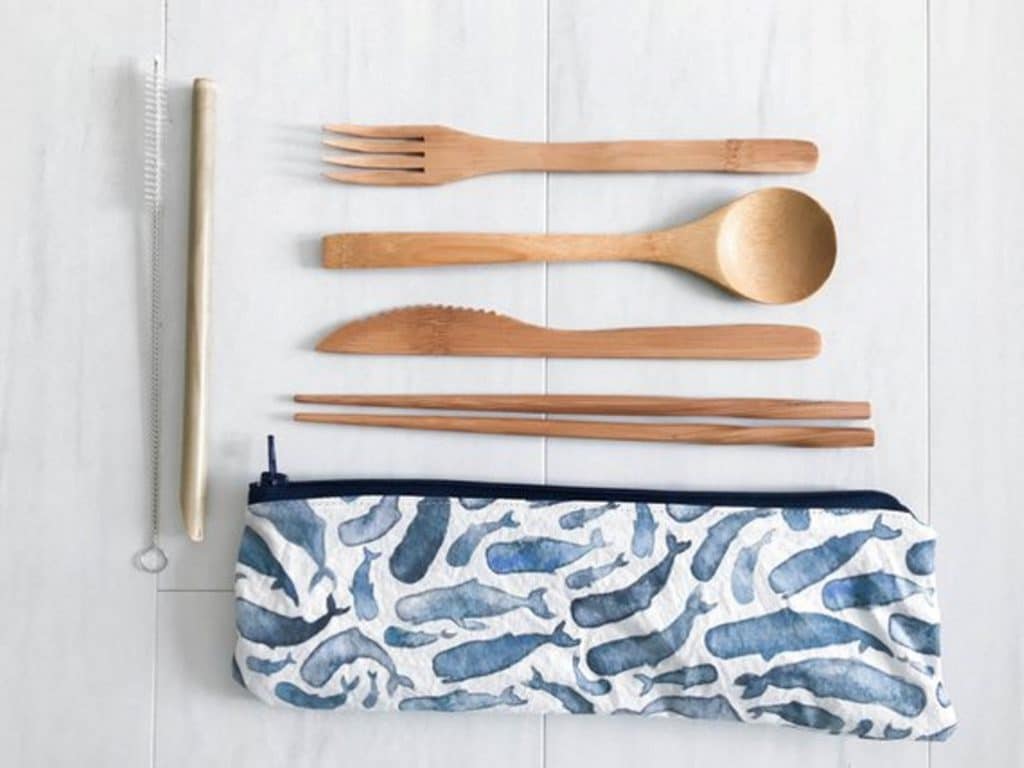

This step is well covered on the interwebs and covers Bea’s “Reuse” and “Refuse” principles!
There are so many very easy switches you can make that will immediately reduce trash you create as well as your pile of recycling. Switching involves small habit changes and most likely a handful of purchases.
Here’s our top 50 most impactful zero waste tips to try and a short list of some product ideas to help you on your zero waste way.
Remember, if you can avoid buying these new, do it! If you already own a version of these things, use them; if you’re crafty, make them and where sensible to do so, look for second hand options!
If you’re starting from scratch, consider investing in a zero waste kit.
Shopping:
Reusable Shopping bags: Replaces plastic bags from super markets/shops. You probably have heaps of these from all sorts of sources (we have a collection we’ve bought from supermarkets, nice canvas ones we bought along the way, freebies from events, etc.).
If you must buy, check out string cotton bags on Etsy.
Produce Bags: Replaces those small plastic bags in super markets/shops used to buy fresh produce with reusable ones!
We’ve found these most helpful at farmer’s markets for things like spinach and kale where it’s more difficult to throw loose items in your shopping bag.
Food & Drink Eating / Storage:
Food Containers: Ideally plastic free food storage containers which replace takeaway containers and plastic storage bags. Also useful for food shopping if you buy and freeze meat or deli items (like olives).
In the past, we’ve sometimes failed when eating on the go but now have now got this locked down because we carry around either a plastic container or a Tiffin when we know we’re going to need to buy lunch on the go.
We own a tiffin but often end up grabbing one of our old plastic containers so if you already have a ton of these, you don’t need to invest further.
Water Bottle: Always opt for eco friendly water bottles over single use plastic. This is the absolute easiest swap there is. If you can drink water from the tap (or filtered tap water), you never need to buy plastic bottles again.
You just don’t. Not to say you won’t because we all get caught out sometimes!
Again, you are likely to already have one of these but if you don’t, here are a bunch of plastic free water bottles we love.
Coffee Cup / Mug: Replaces takeaway coffee cups. If you’re a coffee drinker, this is a must!
You can go for one of two (or both) options here – either a Keep Cup style reusable cup that looks like a takeaway coffee cup or a cup sized flask that keeps your coffee hot longer.
We have both because they’re good for different purposes but we end up using our flasks 90% of the time. One massive perk we’ve discovered with the flasks is cost saving… in Australia, coffee is expensive and we save a lot by making it at home and keeping it warm in our flask for longer!
Quick math: Really good ground coffee costs us $15-20 for the week for both of us (bulk buy). If we were to purchase a coffee a day each, over 7 days it would cost us $63 per week – that’s more than $2,000 savings a year!!
Coffee itself: Replaces coffee pods and/or single coffee bags. John Sylvan, the guy who invented coffee pods is now famous for regretting this invention given the environmental impact.
He also says “They’re kind of expensive to use … plus it’s not like drip coffee is tough to make.”
Indeed!
Coffee is decidedly not difficult to make, at a much lower cost and most importantly without the environmental impact. The switch is super simple, delicious and will most definitely turn you into a coffee snob because the world of aromas and proper, good coffee will be opened up to you.
We now own both a simple coffee press for days when time is short and an Italian stovetop espresso maker for when we want to really enjoy it (sounds expensive but not a touch on an actual coffee machine).
The process is ultra-simple especially using a simple press: you buy ground coffee (or beans and grind it yourself if you’re super hardcore), pop the ground coffee in the press, add hot water, leave it for a few minutes, push the strainer down, pour and enjoy!
Here’s our favorite French press and stovetop Espresso maker – both have lasted us years. a couple of press / stovetop espresso options:
Cutlery kit (including straw): Replaces takeaway cutlery. Luckily they make these super compact, we hardly notice them in our bag but they really come in handy – you won’t believe how often you’ll use your eco friendly cutlery.
This little kit is likely something you’ll need to buy unless you happen to have something lying around or would prefer to take your ordinary cutlery with you (which we’ve done before).
We use a kit without a straw because we find we just don’t really need a straw at all but it seems most people do like to have a straw on them.
Etsy seems to be exploding with great reusable utensil + straw sets.
Food Wraps: Replaces glad wrap and plastic ziplock bags. These food wraps have become iconic zero waste must haves, super useful for keeping produce fresh. If you don’t use single use plastic for this purpose today, good for you!
If you, like most of us, feel the need to cover that salad with some glad wrap, then food wraps are the sustainable alternative you need. Like these beeswax wraps (you do get vegan alternatives) and here is our guide on how to care for your beeswax wraps.
Napkins: Replaces serviettes and wet wipes. Embrace your inner dad and carry a hanky / napkin to wipe those grubby hands when out and about.
We forget this one so often because the napkins we bought are chunky and cumbersome, suggest you use old hankies or other lightweight cotton ones that you can fold into your cutlery kit.
Personal Care, Cooking, & Cleaning
Face Wipes: Replaces cotton balls, face wipes and cottons pads for makeup removal. There are some excellent reusable, washable options out there including little makeup removal pads, linen wipes or just ordinary face cloths.
I prefer a plain old face cloth which can do the job for up to a week (using different corners or patches) before needing a wash.
Likely you have one of these in the cupboard already. If I had to buy for this purpose, I’d go for dark colored options as my cream colored face cloths are looking less and less creamy.
Bamboo Toothbrushes: Replaces plastic, unrecyclable toothbrushes. We’ve really enjoyed using bamboo toothbrushes instead of plastic alternatives, they feel much more wholesome.
They are better because you can compost the handle, though truly compostable bristles (and zero waste toothbrushes) are hard to find so be sure to remove the bristles before composting.
Cleaning Cloths / Surface wipes: Replaces paper towels. Similar to face wipes, reusable and washable towels make life so much easier.
We usually have one for the kitchen counter, one for the floor, one for the sink and a few backups under the sink for emergencies.
Again you could just use old rags for this (those old T-shirts you don’t wear? Or one of the hundreds of drying cloths you don’t use) but there are also many options out there.
Pot Scraper: Replaces foil. You just don’t need foil, it’s the ultimate convenience but it’s just not necessary, especially if you opt for quality eco friendly cookware and sustainable dinnerware.
We haven’t tried pot scrapers yet as we find a good old pot soak does the job well enough but people rave about pot scrapers to get off bits of burnt food from oven trays and the like.
The nice wooden ones seem to only be available from Etsy but likely they’ll start popping up everywhere.
STEP 4: START CREATING NEW HABITS TO MAKE THE SLIGHTLY HARDER, “LESS CONVENIENT” SWITCHES
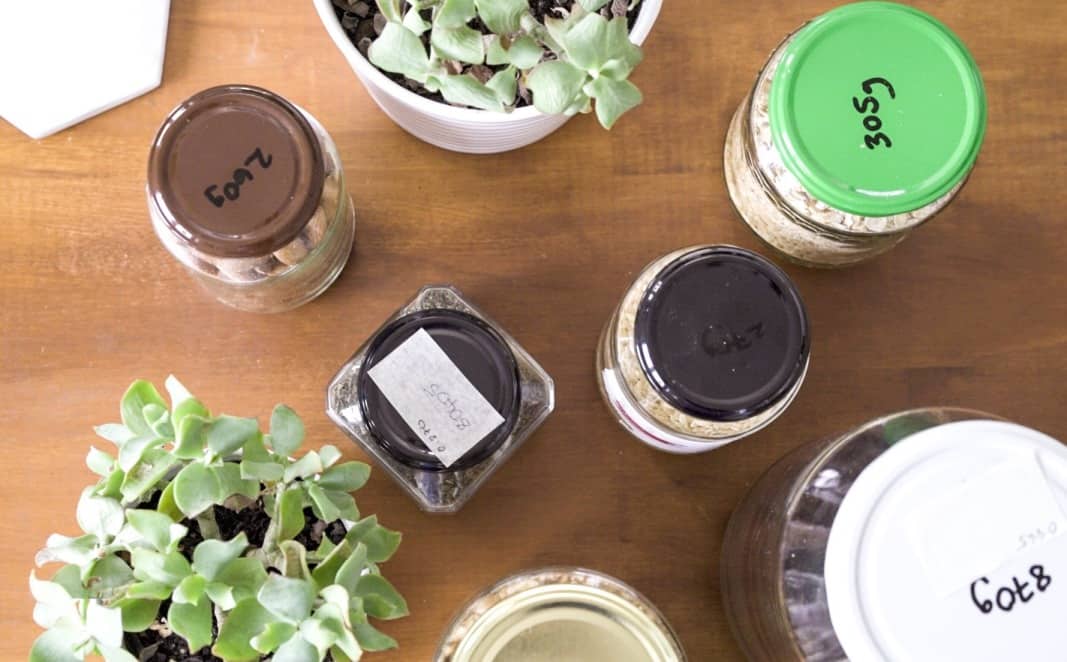

This is also all about the “Reuse” and “Refuse” principles and is the part of the process that takes a little more resolve because it’s not just about simple swaps.
It’s about changing where you shop, how you shop and probably what you buy. This takes a little bit of design thinking.
We’re probably in between steps 4 and 5 right now – we’ve done the easy zero waste switches and are now on the hunt for shops, brands and ideas to help us get next level.
You, like us, are probably ultra-aware of what you’re throwing in the trash by now and are super eager to reduce even further!
Here’s our list of ideas to give you a leg up:
BULK SHOPPING
Bulk online shopping is typically used to buy dry goods, oils, honey, syrups and home care products in bulk from a store that lets you bring your own zero waste containers. You can buy things like nuts, flour, liquid soap, olive oil, and so much more completely plastic free.
This can take a little set up time and a bit of getting used to but once the habit is cemented, bulk shopping is so satisfying. Here’s a few steps to get you going:
- Investigate the bulk food stores in your area: There are now many online bulk shops and zero waste online stores to choose from.
- Collect jars as zero waste food storage containers: Hopefully you’ve already started collecting glass jars / have a collection. If not, you soon will, don’t worry! Take a look at your collection and think about what you could put in each (e.g. larger jars for rice, pasta and smaller jars for oil, sauces). You can also usually buy jars and spray bottles at bulk food stores, but again, try to use what you have before buying new.
- Plan your bulk shopping experience: Write your shopping list to match your jars, visit your bulk food store, weigh your jars BEFORE filling them, and collect your goodies
Note: Not everyone will have convenient access to a Bulk Food Store, don’t despair! You can buy fresh food (and sometimes dry goods) in bulk at supermarkets. Farmers markets are perfect for produce and even some other goodies, like home made preserved food.
If there’s nothing near you, maybe could you start your own store?
LAUNDRY AND DISH-WASHING
Firstly, you can typically buy zero waste washing and dish washing powder/liquid at bulk stores so feel free to do that.
For dish washing in particular, there are now plenty of zero waste dish soap options on the market, from naked bars to dishwasher tablets.
For both dishes and laundry, many zero wasters are also experimenting with Soap Nuts. We quite liked this idea because they’re palm oil free, cruelty-free, and entirely natural without any harsh chemicals.
The nut shells themselves are bizarre little things, which actually create a foamy soap when mixed up with water. All you do is pop a handful of these nuts into a little linen / canvas bag and throw it in with the laundry instead of using liquid or powder.
We did this for almost the entire time we were in London and found it worked just fine. We also added some drops of essential oil to the little soap nut bag to make the laundry smell good. You can use the same set of nuts 4-5 times before they don’t work anymore and then either compost them or make dish-washing soap out of them with a blender.
We’ve read others say that soap nuts don’t work as well for them. If you really need that freshly laundered touch/smell/feel in your life, soap nuts might not be for you.
But if you, like us, are not too fussed as long as things get clean, given them a shot!
CLEANING
Cleaning products typically come in plastic and are choc a block full of harsh chemicals.
Bea Johnson advocates for cleaning with vinegar. We’ve experimented with vinegar, bicarb of soda, lemon, essential oils and castor soap. Can’t say we notice too much difference to ordinary cleaning products for every day cleaning but it does take a little more planning and a bit of experimenting.
Again, you can buy vinegar at the bulk food store or check out these great zero waste cleaning products that we’ve canvassed.
BEAUTY & PERSONAL CARE
This one has been a little tough for us because we originally started this blog to share our findings on sustainable beauty and personal care products, principally inspired by the difficulty of finding cruelty-free, vegan, organic, palm oil free and ethically sourced sustainable products.
A lot of bulk food beauty / personal care products don’t meet all these requirements but do obviously come package free… tricky!
So we’re sort of starting from scratch here, trying to find at least essentials that meet our personal requirements. We will be sharing what we find on the site as we go (see first on zero waste shampoo and conditioner).
UPDATE: Since writing the words above, we’ve had the great fortune of discovering a whole new world of zero waste beauty brands that are bursting onto the scene and even ticking many of our sustainability criteria.
We’ve now created some excellent lists and resources for both our readers. We’ve covered everything from zero waste skin care to zero waste makeup.
TOILET PAPER
Zero waste toilet paper, say what?
It’s true! And it’s a sound step needed to move toward a zero waste bathroom.
Now the real hardcore folks out there would opt for reusable bum cloths. We are not that hardcore (yet?), but thankfully there are lots of eco friendly toilet paper alternatives to make your wee waste free.
Personally, we use recycled eco friendly toilet paper. We have instead been buying recycled toilet paper for a really long time. These often came in recyclable plastic packaging (but it needed special recycling).
Then we discovered both Who Gives a Crap (who use bamboo or recycled paper, give 50% of profits to charity and come wrapped in paper) or Smart Ass (who use sugarcane /bamboo, give 10% profits to charity and come wrapped in paper).
Who Gives a Crap, in particular, has become a favorite.
Did we mention you can order them in bulk and that the pretty paper wrappings for each roll is designed to be reused?!
ZERO WASTE PERIOD
This is actually a really easy zero waste swap that you can totally do in step 3 but I put it here because the idea can be confronting at first for some and you may need some time to get into the zero waste flow (pun intended).
In essence, you swap tampons for a reusable menstrual cup and disposable pads for washable pads and/or period underwear. All sounds very icky and it is at first but once you’ve got the hang of it, it’s no more icky than usual.
I find the reusable period pads a little inconvenient when travelling but they are great for normal life. I would suggest getting a few different sizes.
The cup, on the other hand is the single best thing to happen for periods, ever.
They are so comfortable and easy to use (with practice) and like everything on this list, save a ton of money and a ton of waste! The cups typically come in two different sizes so be sure to check the guidance before buying.
You may need to experiment with a couple of brands to find the best fitting one for you. Here’s a great guide from our friends at Reusable Nation which will help you choose the best sanitary options for you and explains in detail how to clean and maintain them.
For some quick picks, we like Saalt, because they donate 2% of their revenue to fund programs on sustainability, education, and women in need. And for period underwear, we like Modibodi who again, gives back but also, they just really work well!
STEP 5: LEARN MORE ABOUT HOW WASTE IS HANDLED IN YOUR COMMUNITY

We were shocked to discover that just because packaging says recyclable on it doesn’t mean you can just throw it in your recycling. Some materials require special processes (e.g. toothpaste tubes!).
Similarly, it was pretty upsetting to learn about the impacts of food waste going to landfill.
So this step is all about the “Recycle” and “Rot” principles through learning and planning for what you can actually recycle, how you do it and how to deal with your food waste. We are just starting on this step and there is quite a bit to learn!
We suggest the following resources to help you figure out what options there are in your area:
- Local city / district council website: For example, Camden City in London have a lot of information on what you can and can’t recycle, compost, etc.
- Local recycling centers: You can often find centers that let you recycle things like cell phones, computers, batteries, etc. Worth a google for a good informational website in your area that lists out where you can recycle what. In Australia, Planet Ark’s Recycling Near You has an interactive listing of services based on your postcode. In the UK, Recycle Now has Recycling locator to help you find local services
- TerraCycle is a specialist recycling company with global operations. They recycle just about everything! It is worth a look around their website to find out what options they have near you for recycling things like toothpaste tubes! If you want to make an impact at work, TerraCycle can also get involved in recycling for businesses
- Community centers: Try another google search for community centers in your area. There are some in our area with community gardens and they accept food waste for composting.
- Sharewaste app: This app from Reusable Nation is great. It connects you with people in your area who are happy to receive your food waste for composing – life changer if you don’t plan to compost yourself!
- Facebook Groups: We’ve joined our local zero waste Facebook group which has proved to be incredibly supportive and helpful. If you’re struggling with a particular issue (like “what the heck do I do with old X-rays?”), the group can almost certainly help you out with local advice.
- Supermarkets: In Australia, we also have the REDcycle program which allows you to recycle things like candy bar wrappers and plastic bags at select super markets. Check if your local supermarket has something similar!
- Ecobrick movement: This movement seeks to turn single use plastic bottles filled with other soft plastic (like candy wrappers) into building material. Upcycling at its finest! If you don’t have any local services to recycle soft plastics, check to see if there is an Ecobrick movement in your area!
- Resources for composting: If you’d like to start composting yourself, there are so many impressive resources out there that can help. Not to toot our own horn, but we’ve even written a couple, like this guide to apartment composting and this list of the best indoor compost bins. Here’s another great example we can’t take credit for, and there’s lots more. Google is your friend and those community centers can help with advice too!
STEP 6: UP YOUR GAME ON YOUR UNAVOIDABLE WASTE (COMPOST AND RECYCLE LIKE A BOSS)

2-3 weeks is not really fair for this step as it will be ongoing but we think it’s helpful to have a timeframe to get the ball rolling.
This step is simply about putting into practice what you learned in Step 5:
- Create a little recycling depot in your home where you separately collect things like batteries, toothpaste tubes and soft plastics to load up and save time on taking them to recycling drop-offs
- Buy that composting bin or worm farm and start your own mini circular economy!
- Grow your own food so you only pick what you need and waste less (Ok I get it, this is probably not for beginners but we’re very excited to try this after this interview…)
STEP 7: TAKE STOCK AND BE PROUD

Another fun one!
Look back over what you have achieved and think about the following:
- How much plastic have you refused?
- How much have you recycled that wouldn’t have been recycled?
- How much food waste have you managed to redirect from landfill?
- How often do you take your trash can out now compared to before?
Then feel good about it and tell all your friends and family! We’ve found this movement can be pretty contagious… and that’s really the goal here isn’t it?
STEP 8: CONTINUE TO REFINE AND GET CREATIVE

As we said in the beginning, you can’t be perfect at this.
But there are so many ways you can creatively tweak and experiment with your own low waste lifestyle.
Zero waste is a journey not a destination.
That’s why it’s called “going zero waste”.
Thank you for stopping by (this was supposed to be a quick guide). We hope you find some use in this zero waste plan.
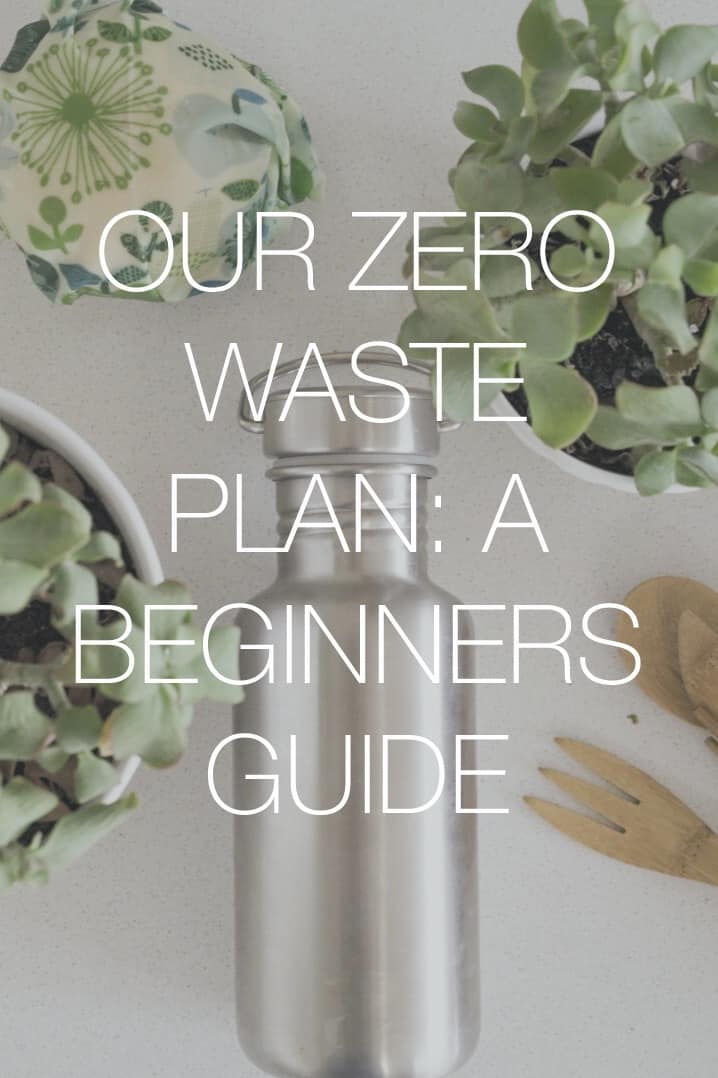

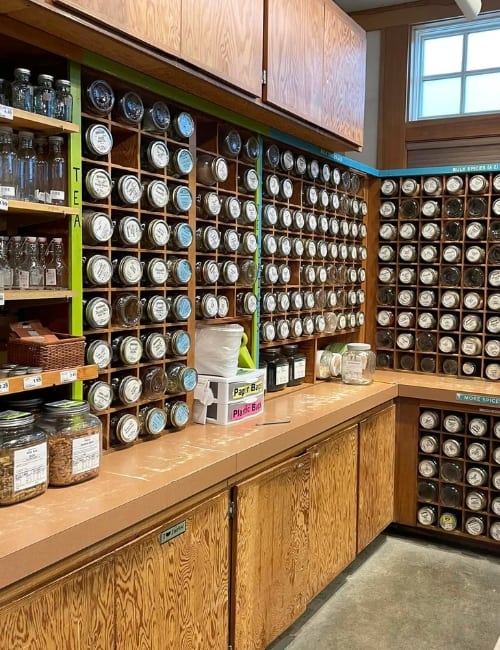
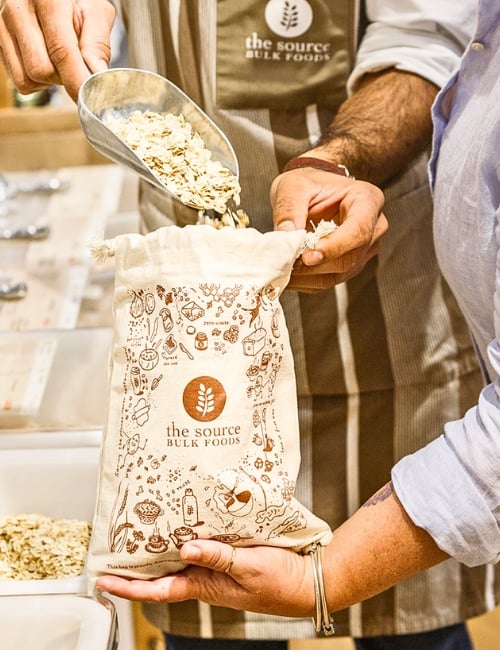
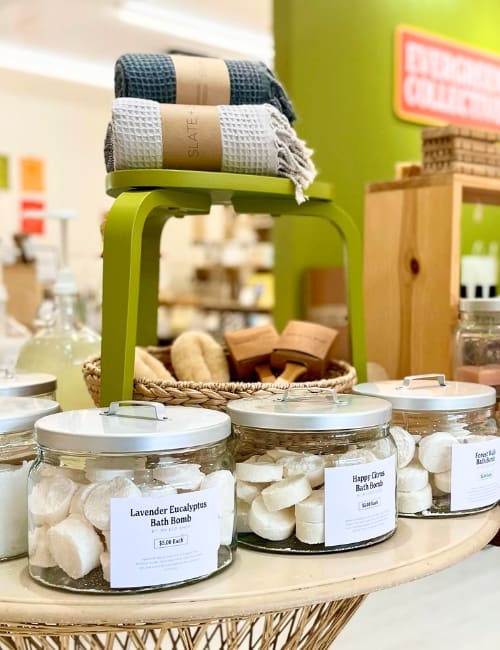
It is really interesting area. as human being, we need to care about the rights of other human beings and animals to live peacefully, without any hazards around them.
this is a good initiative. congratulations.